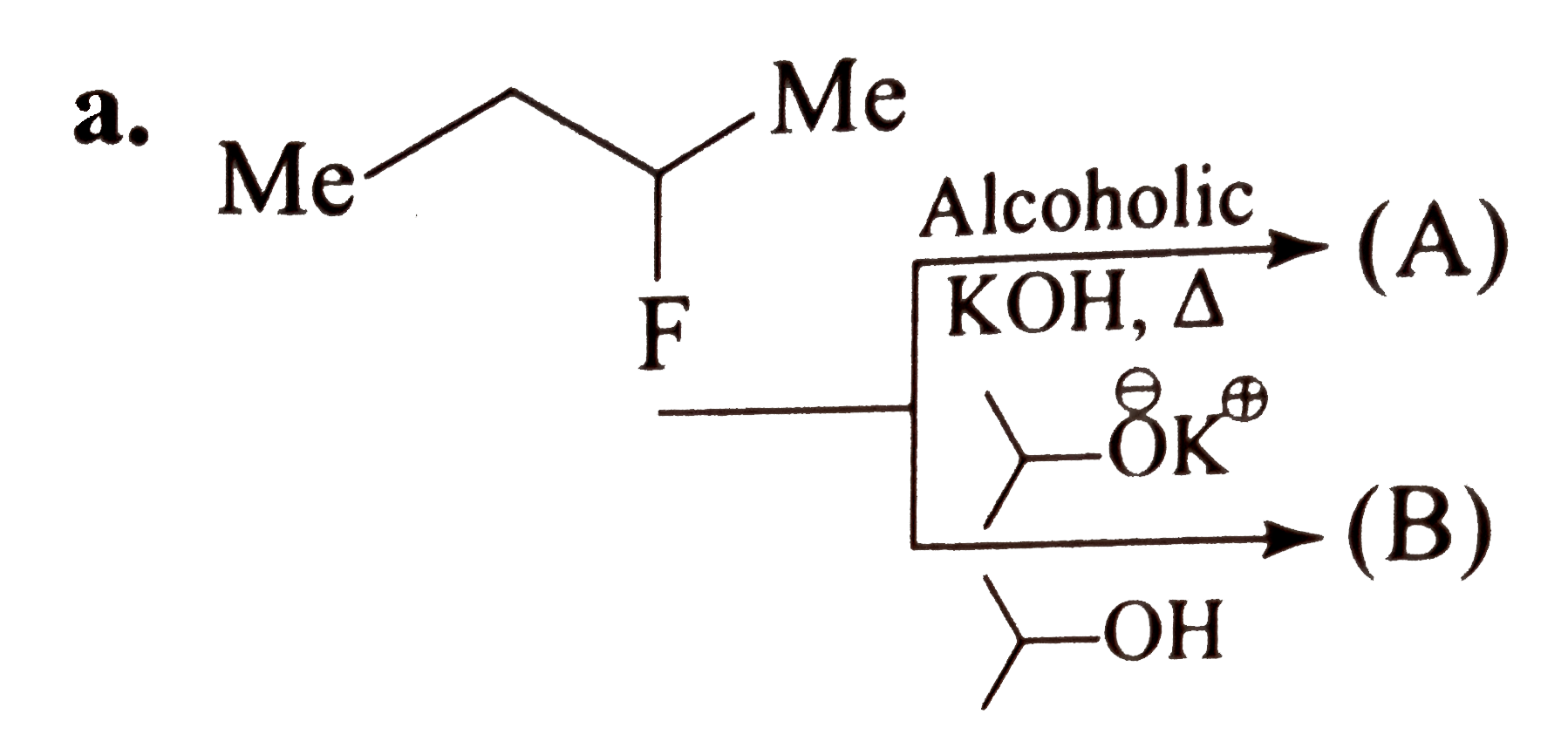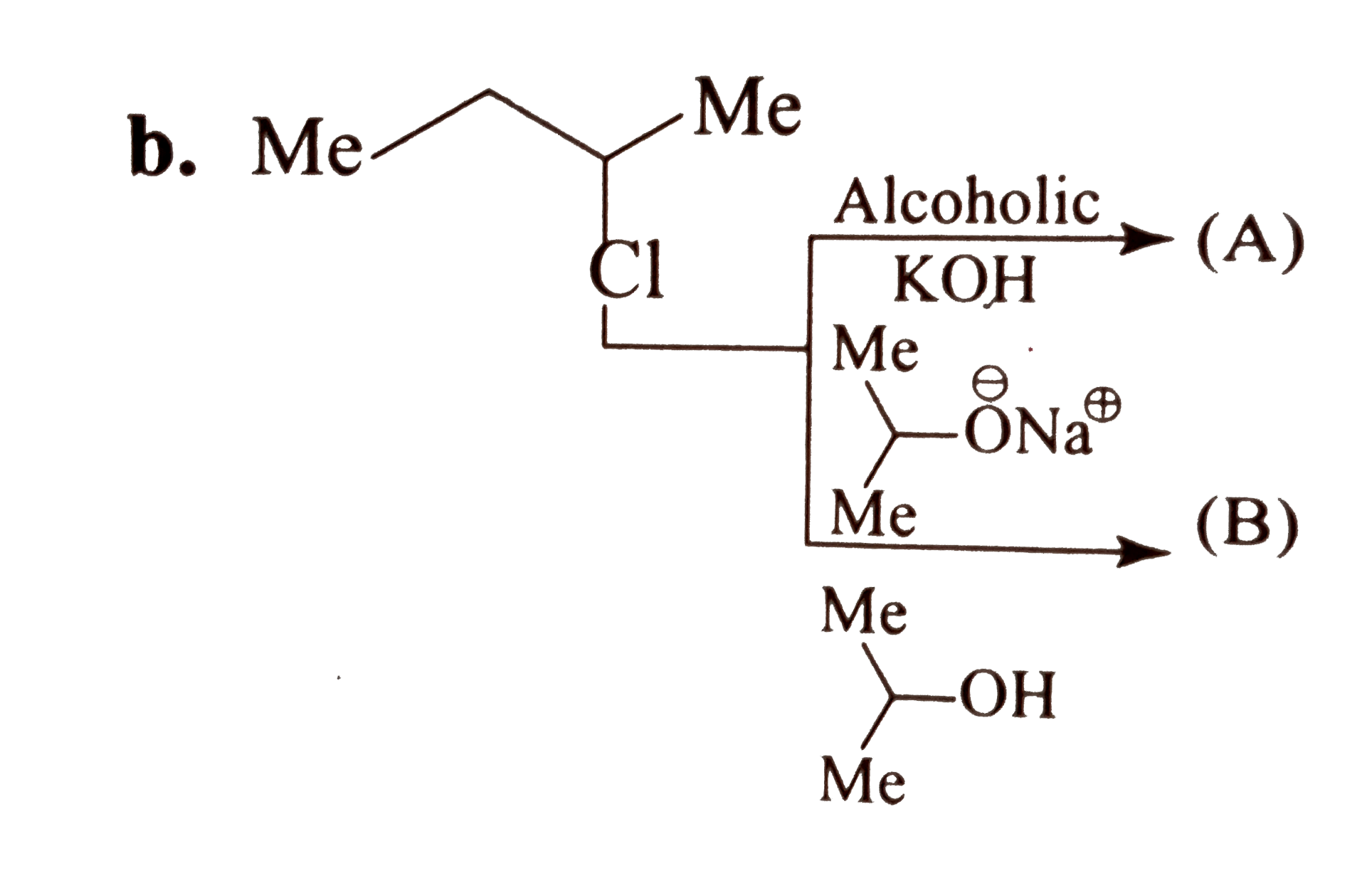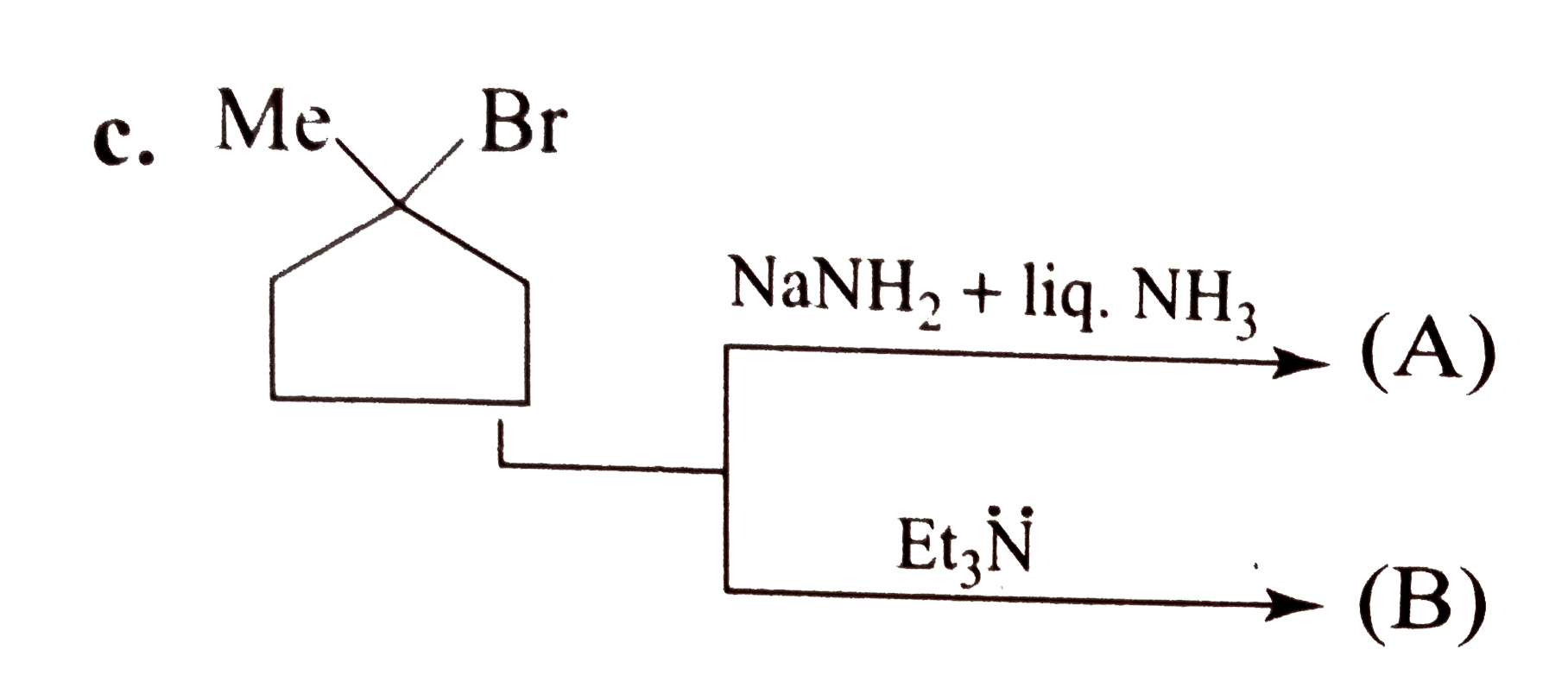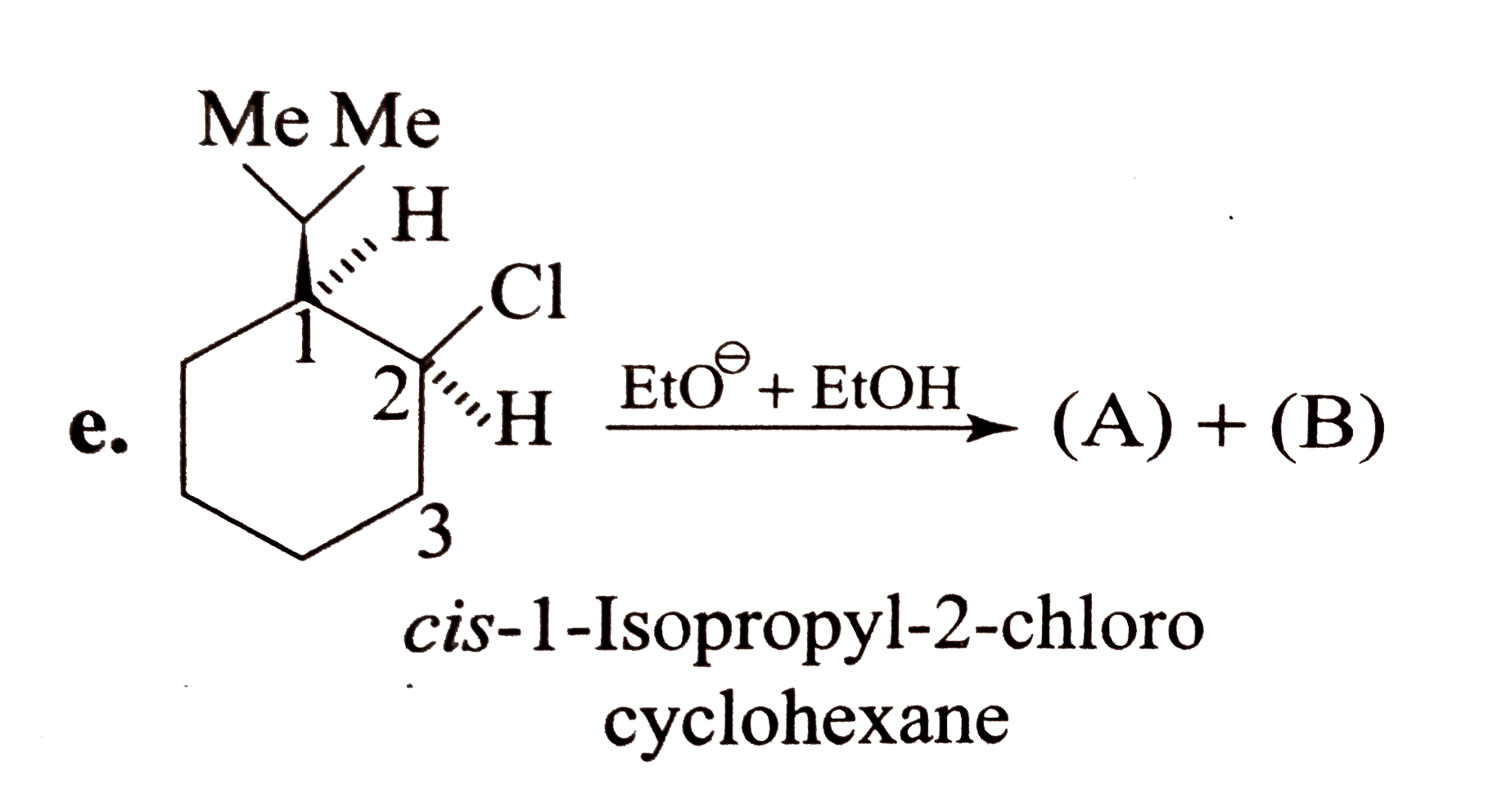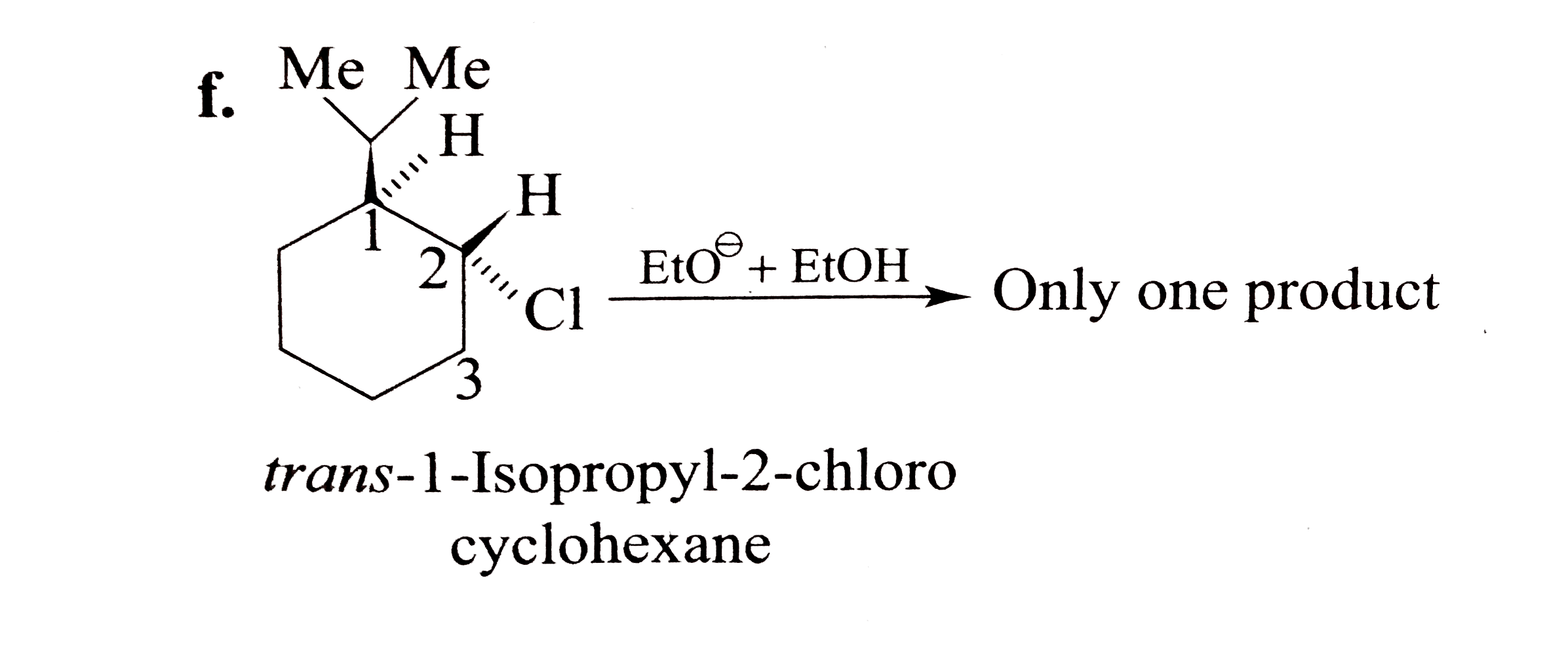Under the specifed condition s ,subastan e X undergoes subition ans elimination eaction sto give products A-D ,Aand B stererisomers ,bu not enantiomers C and D are to enantiomers A is not an isomer of C which ofhte following could be the starting material X?

The correct Answer is:c
Similar Questions
Knowledge Check
- Question 1 - Select One
In the set X = {a, b, c, d}, which of the following functions in X?
AR1={(b,a),(a,b),(c,d),(a,c)}BR2={(a,d),(d,c),(b,b),(c,c)}CR3={(a,b),(b,c),(c,d),(b,d)}DR4={(a,a),(b,b),(c,c),(a,d)} - Question 2 - Select One
A pair of stereoisomers might be classified in various ways. Which of the followign statement are true with respect to pairs of stereoisomers ?
(a) They might be configurational isomers
(b) They might be diastereomers
(c ) They might be configurational isomers
(d) They might be tautomers
(e) They might be conformationasl isomer
they might be enantiomers
(g) they might be positionatal isomersAa,b,c,eBb,d,e,f,gCa,b,fDa,b,c,f
State whether the following statements are true or false.
a. D and L stereoisomers are enantiomers.
b. D enantiomer rotates the plane-polarised light to the right and L enantiomer to the left.
c. Conversion of an erythro to a threo stereoisomer always occur by inversion at one chiral C.
d. A racemate can be distinguished from a meso or a chiral compound by an attempted resolution.
e. Racemisation of an enantiomer can only occure by breaking of at least one bond to the chiral centre.
f. A reaction catalysed by an enzyme always gives an O.A product.
g. When an achiral molecule reacts to give achiral molecule, the product is always racemic
h. In chemical reactions, the change from an S reactant to an R product always signals an inversion of configuraion.
i. An optically inactive substance must be achiral.
j. An achiral compound can have chiral centres.
K. A compound with S configuration is the (−) enantiomer.View SolutionA, B, C, D, E, F and G are playing cards sitting around a circular table. D is not the neighbour of C or E. A is the neighbour of B and C.G, who is second to the left of D, is the neighbour of E and F.
Which of the following will be D’s position after E and D interchange their places?
1) On the immediate left of C
2) On the immediate right of F
3) Neighbour of C and A
4) Neighbour of G and C
5) None of theseView Solution(A), (B) and (C ) are three non-cylic funtional isomers of a carbonyl compound with molecular formula C4H8O. Isomers (A) and (C ) give positive Tollen's test whereas isomer (B) does not give Tollens' test but gives positive iodoform test. Isomers (A) and (B) on reduction with Zn(Mg) | conc. HCl give the same product (D).
(a) Write the structures of (A), (B) ,(C) and (D).
(b) Out of (A), (B) and (C ) isomers, which one is least reactive towards addition of HCN ?View Solution(A), (B) and (C) are three non-cyclic functional isomers of a carbonyl compound with molecular formula C4H8O. Isomers (A) and (C) give positive Tollens' test whereas isomer (B) does not give Tollens' test but gives positive Iodoform test. Isomers (A) and (B) on reduction with Zn(Hg)/conc. HCl give the same product (D).
(a) Write the structures of (A), (B), (C) and (D).
(b) Out of (A), (B) and (C) isomers, which one is least reactive towards addition of HCN ?View Solution" A pair of steroisomer might be classified in various ways depending upon their exact nature"
How many following terms could properly be applied to a pair of stereoisomers, assuming their nature permits?
(a)They might be meso isomers. (b) They might be tautomers.
(c ) They might be enantiomers. (d) They might be diastereomers.
( e) They might be comformational isomers.
(f) They might be costitutional isomers.
(g) They might be configurational isomers.
(h)None of the above statements are true.View Solution(a) How do you convert the following
(i) Ethanal to propanone
(ii ) Toluene to benzoic acid
(b) (A),(B ) and (C ) are three non cyclic functional isomers of a carbonyl compound with molecular formula C4H8O. isomers (A) and (C) give positive Tollen's test whereas isomers (B) does not give Tollen's test but gives positive iodoform test , isomers (A) and (B) on reduction with Zn(Hg)/conc. HCl gives the same product (D)
(i) Write the structures of (A), (B), (C) and (D)
(ii) out of A,B and (C) isomers which one is least reactive towards additions of HCNView Solution



